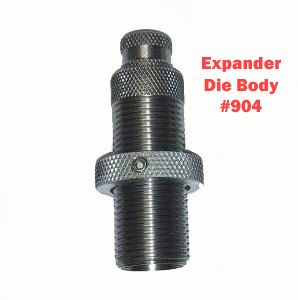I bought my first box of Lapua to try. Read enough that you can just load them and shoot. Against my better judgment I did load them without doing anything to the brass. 24gr of Varget (I though was standard not crazy high pressure) which is at least a 4-5 years old out of an opened 8# jug. 77gr SMKs at 2.395 COAL 1.985 CBTO. CCI 400s.
Got either pierced primers or badly cratered. Will post pics soon.
I checked the brass before hand to see if it would chamber in my gun and every piece I tried did, maybe 10 pieces. They did have different case head to shoulder datum measurements but I didn't think it would matter as I just wanted them fireformed.
I'm realizing now I may have also been slightly into the lands. The 77s ogive doesn't allow for as long a COAL as something like an ELD, this combined with the dry Varget and an 80 degree day I think may have been my problem. Also the bullets didn't seat smoothly having not champfered the case mouths (I new I should've but wanted to see if I could just load the new brass). I think I may have had excess neck tension as well.
I have been shooting LC and Winchester exclusively in this gun without any issues, much hotter loads than this also. 24.5gr of 8208 XBR w/75gr ELDs is on the lower side of that node, 80.5gr Bergers with 25gr of N140 also shot well and was on the lower side of the node. I like to load on the lower side so I have some wiggle room on warmer days.
I pulled the bullets, sized and decapped, reprimed, loaded 23.5gr of Varget (I forgot how much this stuff sucks to work with), and loaded to 2.375 COAL or 1.966 CBTO to make sure I'm not in the lands.
I have tested 88gr ELDs with a new lot of Varget and got passed 24gr without seeing any pressure.
Any thoughts as to what might be going on? Ive never had a pierced primer ever before.
Some on another forum are telling me the CCI 400 is "too soft", which I doubt because I have shot 24gr of Varget behind 77s in a gas gun with CCI 400s at 2.25" COAL.
This is a Tikka T3x action, 26" Bartlein M24 profile, not sure of the chamber as I bought the gun used. It shoots amazingly well and this is the first problem Ive had with it, hundreds of rounds with LC or Winchester without any issue. My CBTO with 75gr ELD is 1.963 CBTO, that was .030" back from jam using my micrometer seating die. Finding the jam using the Erik Cortina method, which I'm finding myself still in the lands after backing of .020-030".
*I am using a Hornady custom FL sizing die and do not yet have a mandrel die, can't figure out which way to go on those. I bump the should .020-.025" in my bolt gun.
Got either pierced primers or badly cratered. Will post pics soon.
I checked the brass before hand to see if it would chamber in my gun and every piece I tried did, maybe 10 pieces. They did have different case head to shoulder datum measurements but I didn't think it would matter as I just wanted them fireformed.
I'm realizing now I may have also been slightly into the lands. The 77s ogive doesn't allow for as long a COAL as something like an ELD, this combined with the dry Varget and an 80 degree day I think may have been my problem. Also the bullets didn't seat smoothly having not champfered the case mouths (I new I should've but wanted to see if I could just load the new brass). I think I may have had excess neck tension as well.
I have been shooting LC and Winchester exclusively in this gun without any issues, much hotter loads than this also. 24.5gr of 8208 XBR w/75gr ELDs is on the lower side of that node, 80.5gr Bergers with 25gr of N140 also shot well and was on the lower side of the node. I like to load on the lower side so I have some wiggle room on warmer days.
I pulled the bullets, sized and decapped, reprimed, loaded 23.5gr of Varget (I forgot how much this stuff sucks to work with), and loaded to 2.375 COAL or 1.966 CBTO to make sure I'm not in the lands.
I have tested 88gr ELDs with a new lot of Varget and got passed 24gr without seeing any pressure.
Any thoughts as to what might be going on? Ive never had a pierced primer ever before.
Some on another forum are telling me the CCI 400 is "too soft", which I doubt because I have shot 24gr of Varget behind 77s in a gas gun with CCI 400s at 2.25" COAL.
This is a Tikka T3x action, 26" Bartlein M24 profile, not sure of the chamber as I bought the gun used. It shoots amazingly well and this is the first problem Ive had with it, hundreds of rounds with LC or Winchester without any issue. My CBTO with 75gr ELD is 1.963 CBTO, that was .030" back from jam using my micrometer seating die. Finding the jam using the Erik Cortina method, which I'm finding myself still in the lands after backing of .020-030".
*I am using a Hornady custom FL sizing die and do not yet have a mandrel die, can't figure out which way to go on those. I bump the should .020-.025" in my bolt gun.













